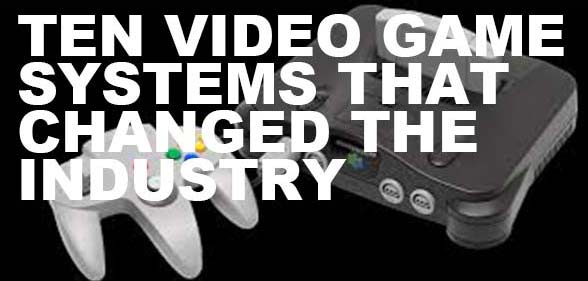Intellivison
Mattel released the intellivision, the first challenge to Atari’s dominance and the start of an early 80’s console war between Atari and Mattel. The intellivision features slightly better graphics than the Atari 2600, plus it offered synthesized voices in video games.
Game Boy
Nintendo scores another smash hit with the introduction of the Game Boy in 1989. It was the first major handheld game console of it’s kind. It featured an 8-bit CPU like its parent system, the NES and the black and white LCD screen. The game Tetris made sales of this console go through the roof.
Neo-Geo
The debut of SNk’s 24-bit in 1990 marks a home-system that is years ahead of its competitors. Huge detailed 2-D graphics, the Neo-Geo’s appeal is at arcade-level quality used at home, however it’s $650 price for a new system kept it from achieving mass popularity.
Super NES
After getting beaten to the punch to the 16-bit by Sega Genesis, Nintendo released a new system in 1991. The Super NES catches up to the Genesis thanks to it’s slight technological superiority and the strength of existing Nintendo brands.
Nintendo 64
Nintendo 64 release marks the last mass-market system to use cartridges. Even though cartridges are more expensive, the Nintendo 64 cartridges load much faster than CD-ROM games. The Nintendo 64 lacks the broad range of games released for the PlayStation, but scores big with other games.
Playstation 2
Sony releases the first 128-bit system featuring backwards compatibility and play older 32-bit PlayStation games on the PS2. The PS2 will become the most popular console games being played over high-speed internet connections.
Xbox
Microsoft makes its first independent foray into the console market with the release of the Xbox in 2001. The Xbox console allows for greater performance when compared to other 128-bit consoles like the PlayStation 2 and Nintendo Gamecube, but sales are still below the Playstation 2.
GameBoy Advance
Game Boy’s evolution is the Game Boy Advance, a backwards-compatible portable system that plays games from both the Game Boy and the Game Boy Color portable consoles. The LCD screen can display more than 32,000 colors and it also has a rechargeable lithium-ion battery and folding case.
Nintendo DS
Nintendo released the Nintendo DS in an attempt to integrate more computing functions. The DS features dual screens and touch-screen technology similar to that of a PDA or a tablet PC.
Playstation Portable
Sony released the Playstation Portable in 2005. Like the Nintendo PSP, this device features wireless capability, high-quality graphics, and non gaming functions like photo storage and digital audio/video capabilities that mimic those of PC-based handheld devices.

